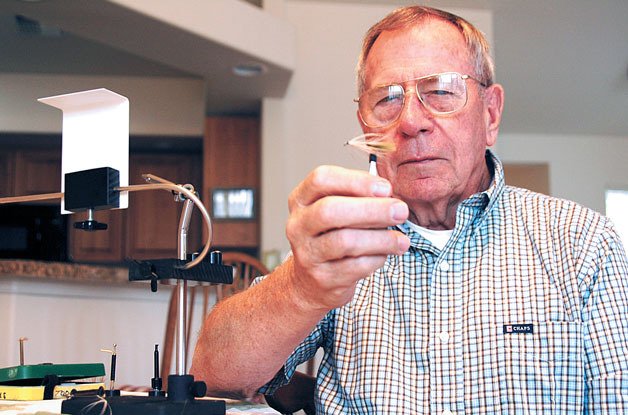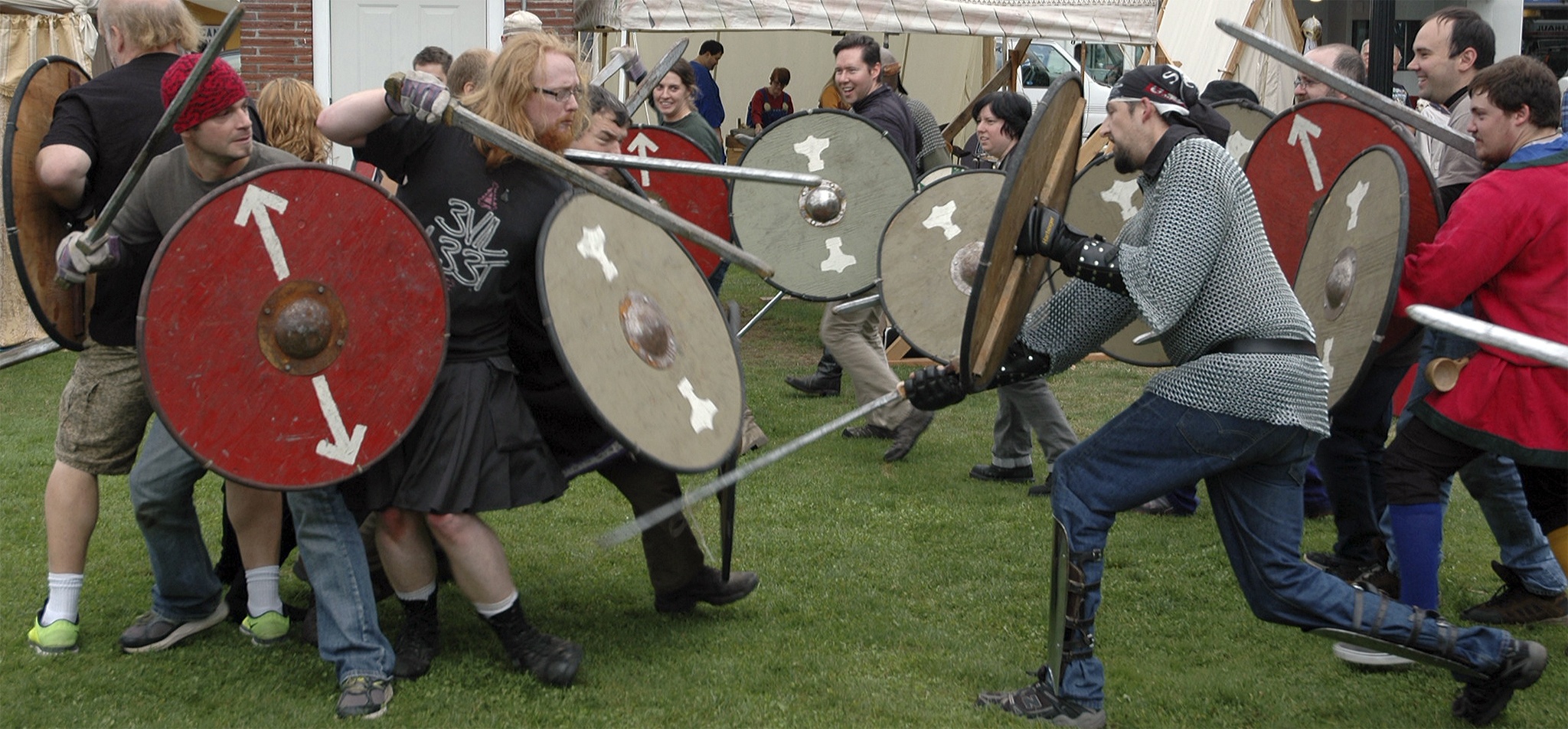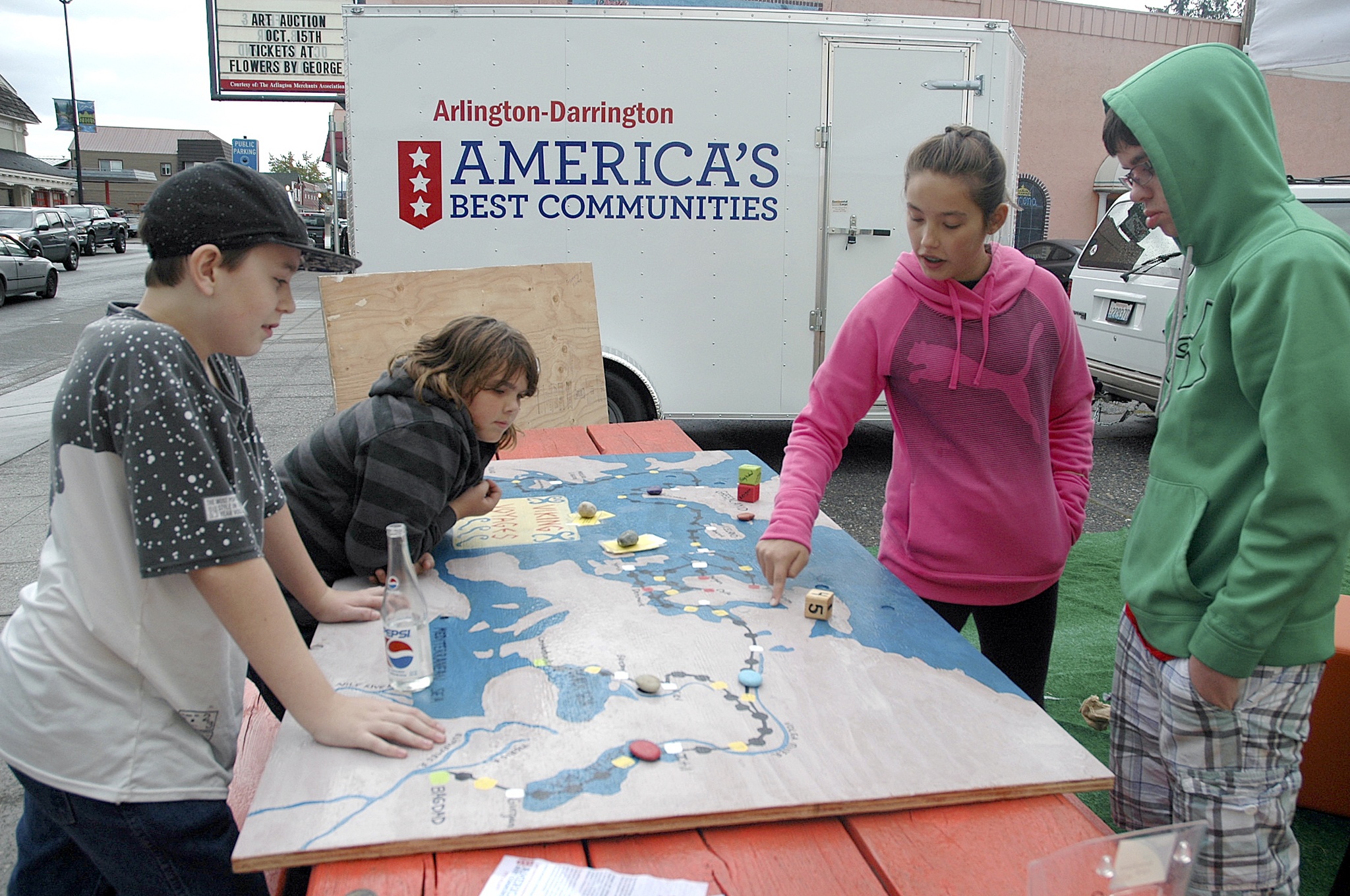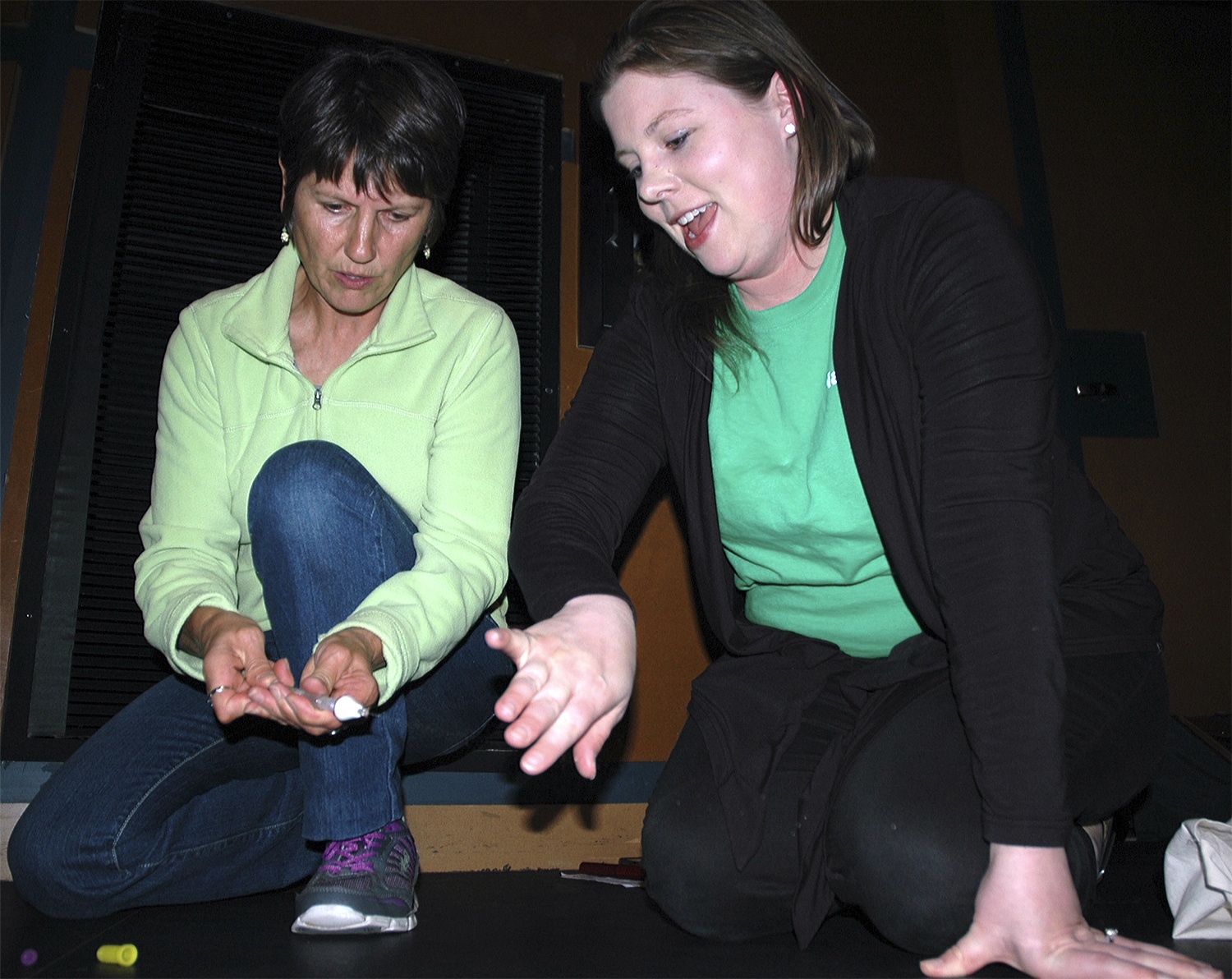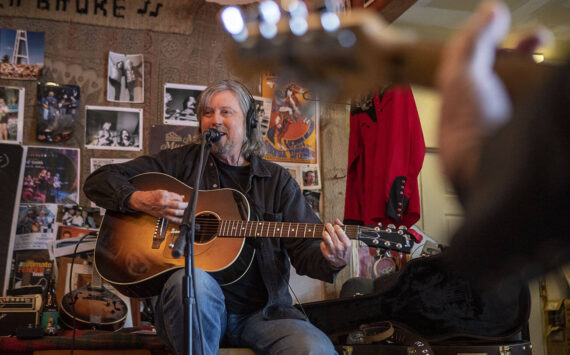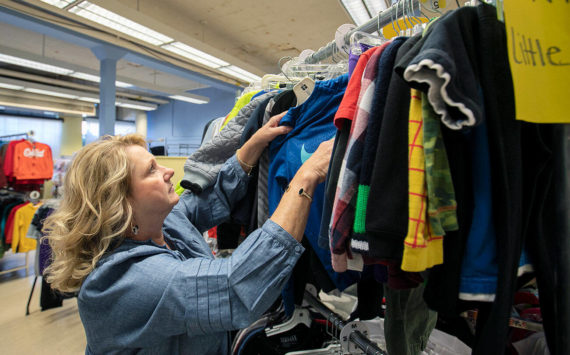ARLINGTON — Ask Arlington resident Jesse Scott and he’ll tell you that necessity was the mother of his invention.
However, even though Scott is an avid fly fisher, he doesn’t need to be able to tie his flies one-handed since he has the use of both his arms.
When he first met Marvin Johnson, though, Johnson’s left arm had been rendered completely immobile.
Scott is a Vietnam veteran who retired as a colonel in the Air Force in 1987, while Johnson was a sergeant first class in the Army who’d incurred his injuries in Iraq in 2006. When Scott met Johnson at the Madigan Army Medical Center at Fort Lewis, the older man felt compelled to help a fellow war veteran and fly fisher. The helping hand Scott came up with would eventually be named the “Evergreen Hand,” in honor of the Evergreen Fly Fishing Club in Everett, of which Scott is a member.
“I saw it as a source of occupational therapy for wounded veterans,” Scott said of the compact plastic-and-metal device, whose multiple-hinged metal arm can be fitted with fine-tuning tools that attach easily to its magnetic plate. “It came about from a lot of trial and error, but I knew I needed to duplicate the movements of the shoulder, elbow, wrist and hand in moving things nearer and further, as well as in holding things so that its user could do the work of tying flies with just one hand.”
The magnetic tools include pliers and loops, to substitute for fingers, and are coupled with a more traditional fly tying vise. Scott understands the precision with which Marabou feathers must be doubled over, and chenille must be peeled, to wrap properly and create an attractive fly.
“It’s still evolving, and it hasn’t been all me,” said Scott, who’s quick to credit the many people who have contributed suggestions on how to improve the design of the Evergreen Hand.
Scott has been delighted to hear back from fly fishers across America and Canada who have found his design online and built their own Evergreen Hands, albeit with names of their own. He didn’t even want to patent the design until he learned from the U.S. Patent Office that someone else could claim prior knowledge of the design and prevent its production.
“Fortunately, I was told that having stories about my invention appear in the local newspaper would help me prove prior knowledge,” said Scott, who’s made his design public domain.
He thanked Glenn’s Welding of Lynnwood for providing the magnetic plates, as well as Norm Norlander of Kelso, Wash., for upgrading his design from wood and screws to plastic and bolts.
“He was the one who told me that I should use stainless steel instead of brass, because it was less expensive,” said Scott, who’s personally built 40 Evergreen Hands and distributed them throughout North America. He plans to make at least a hundred more, now that he’s discovered a secondary market in former fly fishers who have suffered strokes.
“This one fellow, a hand-surgeon, had tried to make an electric fly tying machine for his father who’d had a stroke, but it was too cumbersome,” Scott said. “He had a degree in electrical engineering and he told me that he couldn’t believe what I’d come up with. Of course, I’m unencumbered by a significant education,” he laughed.
Scott has also teamed up with Project Healing Waters, which uses fly fishing to aid veterans’ rehabilitation, to promote his invention.
“I’ll never forget this one Texas kid who’d been lacing wallets for his physical therapy,” Scott said. “He wasn’t even a fly fisher, but after he’d tied his first fly, he smiled and said, ‘I’ve laced my last wallet.’ I just hope this can make somebody’s life a little better.”
To learn more, email Scott at gardenfly@comcast.net.
